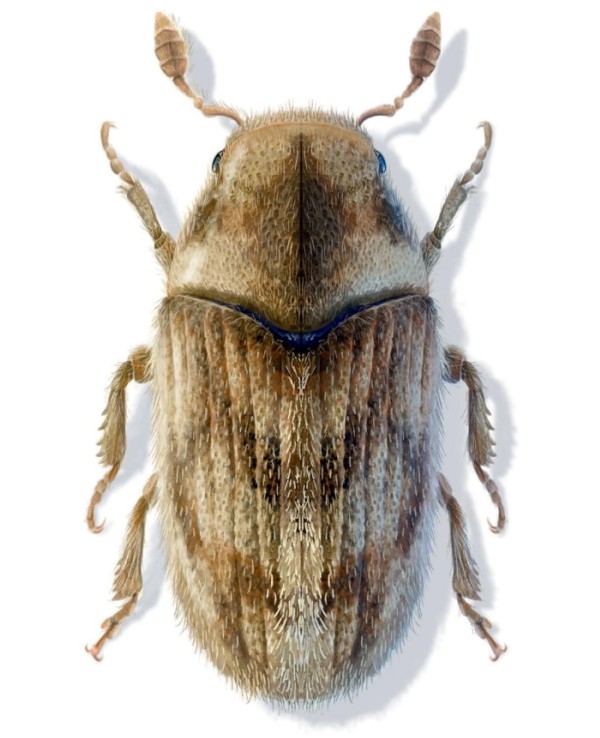
Eastern ash bark beetle.
Illustrations by Nicholas Bezio.
Have you ever wondered what makes the meandering paths etched into fallen trees and logs, just beneath the bark? Although many insects tunnel through wood, bark beetles create some of the most elaborate designs. These beetles are members of two subfamilies of the Curculionidae: the Platypodinae and the Scolytinae.
Adult bark beetles bore tiny entry holes through the bark. Their excavations include tunnels where female beetles lay their eggs, as well as typically much smaller tunnels that larvae create as they feed, grow, and pupate. Some species that mate under the bark also create nuptial chambers.
Individual larval feeding tunnels almost never intersect. In most species, larvae avoid competing for food by using olfactory, acoustic, and chemical cues to maintain distance from each other. In order to chew wood, both larvae and adults of most bark beetle species rely on symbiotic relationships with fungi that break down lignin and cellulose.
Below are the galleries of four native bark beetle species common in northeastern forests.
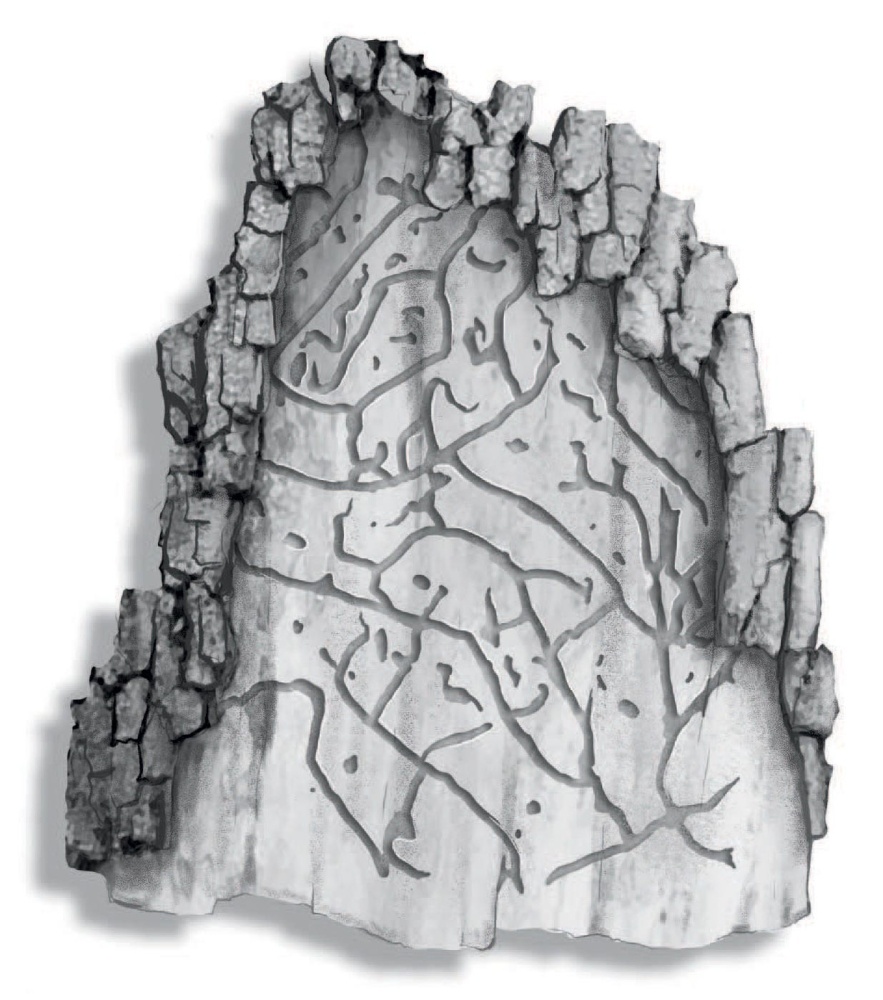
As winters warm, southern pine beetles, Dendroctonus frontalis, which are native to the South, are moving into the Northeast. The female beetles’ tunnels take winding (often described as S-shaped), crisscrossing paths that girdle the tree. Larval tunnels are short, because the larvae feed not on the phloem, but on fungi brought to the tree by the mother beetles. These highly destructive pests can surge in population, and they quickly kill large stands of otherwise healthy trees. For more information about them, contact your state extension service or forestry department.
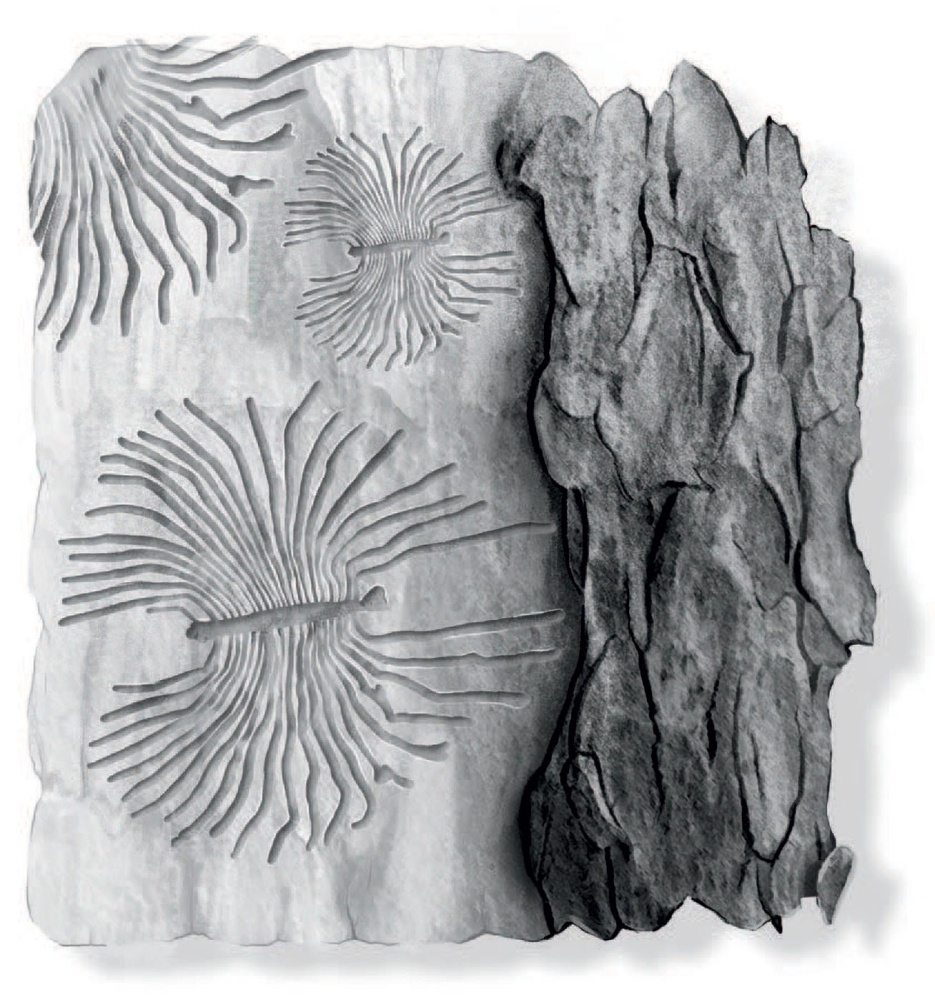
The galleries of native elm bark beetles, Hylurgopinus rufipes, include larval tunnels spreading out in a featherlike pattern from a central, straight-line tunnel where the female beetle laid her eggs. These galleries can be distinguished from those of a common non-native species, Scolytus multistriatus, by the way they run against, not with, the wood grain. Both species serve as vectors for the non-native fungus Ophiostoma spp., which causes Dutch elm disease.
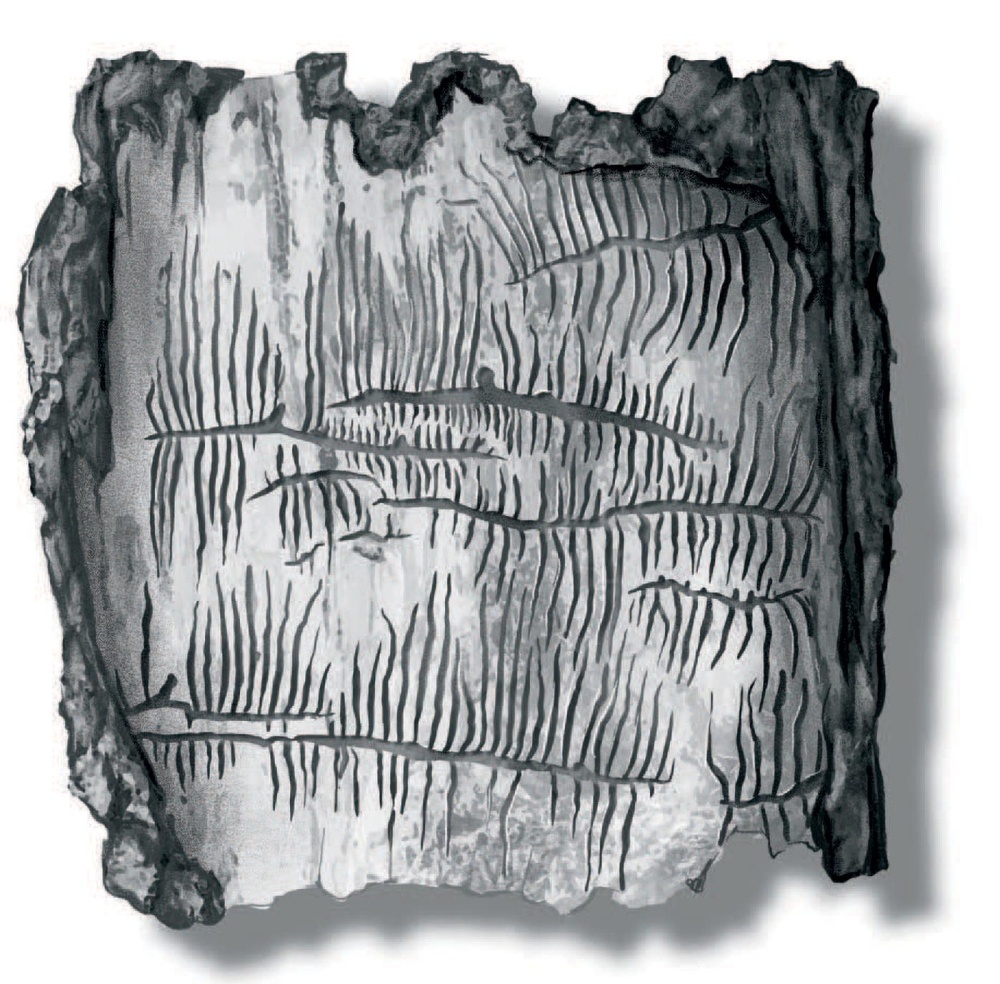
The tunnels of female eastern ash bark beetles, Hylesinus aculeatus, run in long, mainly straight lines, perpendicular to the trunk, with larval tunnels extending off the sides. These native beetles typically only attack dead and dying trees, so they don’t present the same threat to host trees as emerald ash borer.
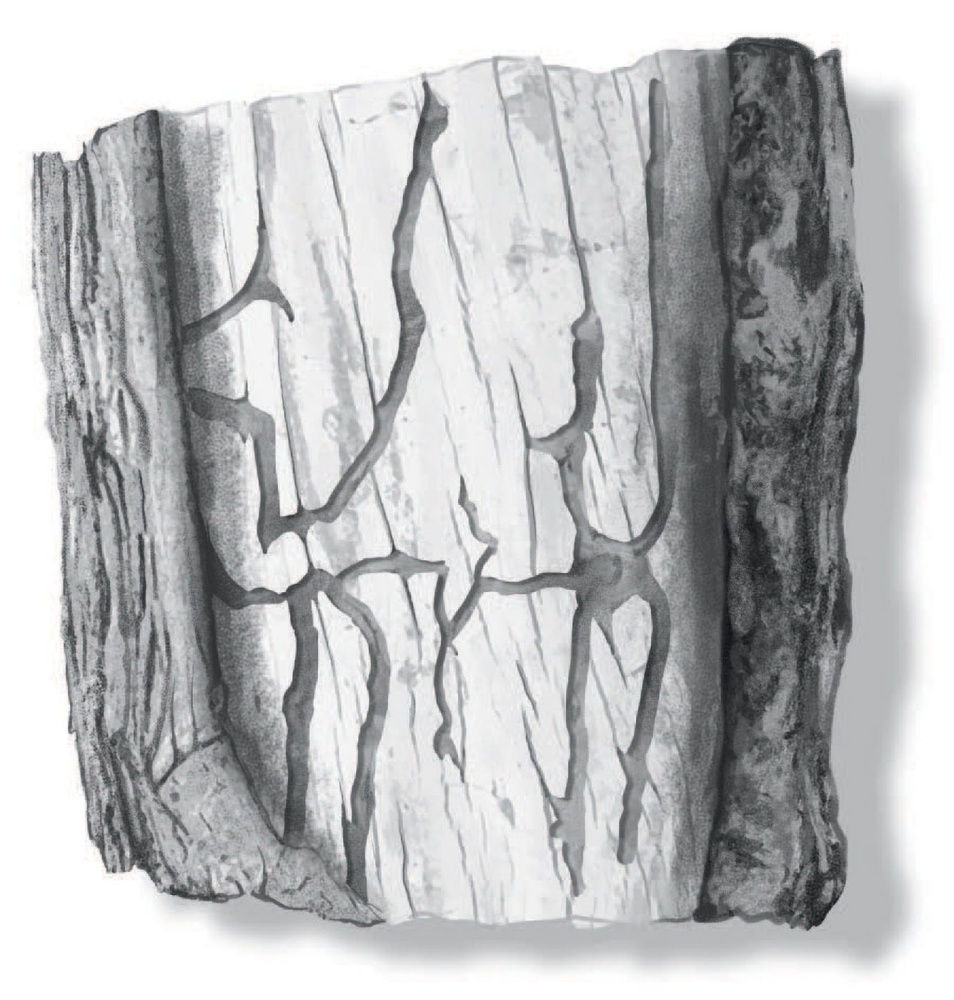
There are several common northeastern species of pine engravers – also called ips – including Ips grandicollis, the eastern five-spined IPS, which often colonizes dead or dying trees. Ips species typically create curving H- or Y-shaped galleries, which form after several females mate with one male, then head off in different directions from the nuptial chamber.
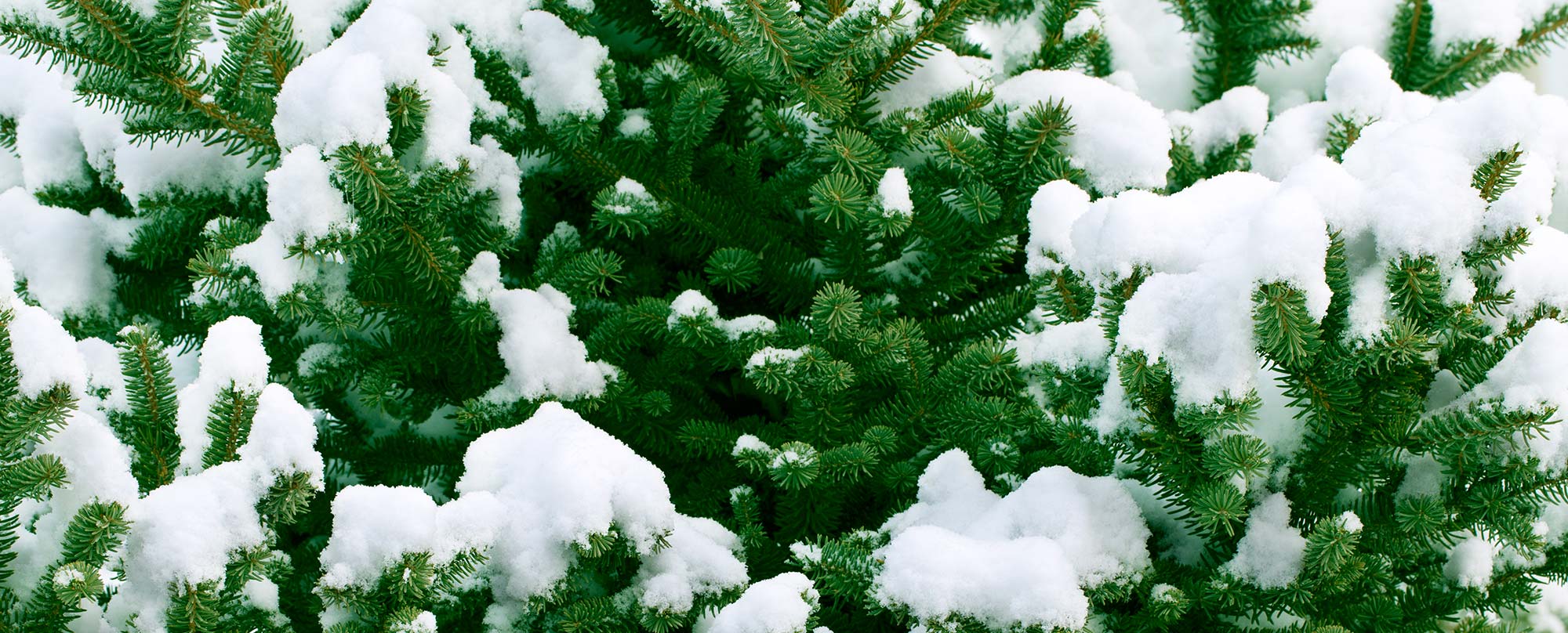

Discussion *